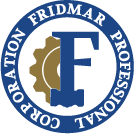
When people categorize law, many think of the big five: criminal, family, corporate, administrative, and civil. While civil litigation encompasses all disputes between private individuals, many people do not know that construction litigation is largely distinct from traditional civil litigation. Primarily, the distinction lies in the requirement to fully know, understand, and appreciate the nuances of the construction industry. More importantly, the rules that govern procedure in ordinary civil actions vastly differ from those that affect actions commenced under the Construction Act/Construction Lien Act.
Discoveries in Ordinary Proceedings
In addition to the main differences in how actions are commenced and how initiating proceedings may be served, one of the greatest variations in construction lien actions relates to discovery. Discovery, or documentary disclosure and examination for discovery, refers to:
the process of each party gathering facts, titles, documents, or other things which are in their exclusive knowledge or possession, and which are necessary to the party seeking the discovery as a part of a cause or action pending or to be brought in another court, or as evidence of his rights or title in such proceeding.[1]
In ordinary civil actions, the Rules of Civil Procedure explicitly spell out the process for documentary disclosure and examinations for discovery.[2] Namely, under the Rules, each party has a statutory right and entitlement to obtain information and examine parties on their evidence during the course of the Action. Further, parties may even inspect certain documents and obtain further factual information about allegations raised in the Plaintiff’s pleadings.[3] Conversely, in construction lien proceedings, parties are not entitled to any interlocutory – or interim – steps without consent from the Court on proof that those steps are necessary or will expedite the resolution of the issues in dispute.[4]
Discovery in Construction Law
Although construction lien proceedings do not extend the same rights as ordinary proceedings, those forms of examination may be requested at a “first pre-trial” before a Master or Judge (depending on jurisdiction). Depending on the quantum of the lien, some Masters/Judges may Order limited discoveries or completely remove this step and proceed to trial by way of sworn Affidavit evidence.
Additionally, and in order to allow parties some preliminary fact-finding information, the Construction Act allows claimants to demand information pursuant to Section 39. The Act extends a similar fact-finding ability to Owners/Contractors/other Defendants through a cross-examination of the lien claimant on the contents of their lien by way of Section 40.
Section 39 – Right to Information
Under Section 39 of the Act, “any person having a lien, or who is a beneficiary of a trust under Part II, or a mortgagee may, by written request, require information to be provided within twenty-one days. This information varies depending on whether the request is made from a contractor to an owner, subcontractor to contractor, trustee, etc. Section 39(6) further grants a statutory right for claimants to bring a Motion before the Court where a party fails or refuses to comply with the request made. In practice, these sorts of Motions may not be beneficial to the claimant as Courts still retain the discretion to determine the necessity of the information sought or justify the refusal to disclose said information.[5]
Nevertheless, a Section 39 demand letter is incredibly useful for claimants trying to determine the extent of holdback retained by an owner, whether any labour and material supplies bonds exist, and whether monies have been paid out, creating trust obligations.
Section 40 – Cross-Examination on Claim for Lien
As discussed in prior posts, Section 40 creates a right for any a contractor, the payer of the lien claim, or any person named in the claim for lien to cross-examine the lien claimant, the agent of the lien claimant or a trustee of a workers’ trust fund (where applicable). Unlike the Rules of Civil Procedure, that explicitly limit typical examinations for discovery to a maximum of seven hours, there is no set limit for a Section 40 Examination. In fact, it may not be uncommon or improbable for a Section 40 Examination to last several days – especially where multiple claimants band together in one Claim for Lien.
While a Section 40 Examination may be utilized by skilled litigators as a tactic to chip-away at inflated liens, the real benefit of this advanced method of discovery is to reduce the claim for lien – or entirely invalidate a lien.
The foregoing is for informational purposes only and should in no way be relied upon as legal advice. If you have any further questions, or would like to schedule an appointment for legal advice tailored to your circumstances and business, please contact me at dan@fridmar.com .
[1] Black’s Law Dictionary, online (June 2020), sub verbo “discovery”.
[2] R.R.O. 1990, O. Reg. 194, rs. 30.01-30.08, 31.01-31.11.
[3] Ibid, rs. 25.10 & 30.04.
[4] Construction Lien Act, R.S.O. 1990, c. C.30, s. 67(2) and O. Reg. 302/18: Procedures for Actions under Part VIII, s. 13.
[5] Maple Leaf Homes & Cottages Inc. v. Zoellner Windows (1982) Ltd. (1989), 1989 CarswellOnt 692 (Ont. H.C.).






